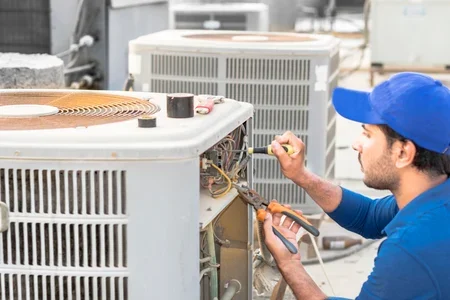

As an HVAC contractor, a strong supplier relationship can help you get the components and materials you need to meet your customers’ demands, but in addition to getting the right supplies to run your business, it is essential to get them at the best possible price. Lower costs for your supplies means you can be more competitive in your bidding, leading to more jobs and higher margins on your maintenance contracts.
Procurement optimization, i.e., getting the most out of your procurement processes and strategy, can add benefits beyond competitive pricing, including improved overall quality of your parts and supplies and increased availability. HVAC parts that are inferior in quality or arrive late are useless and cost you time, money, and customer satisfaction.
Unfortunately, not every HVAC contractor understands how to negotiate supplier pricing in a way that strengthens relationships with suppliers while still acquiring the lowest possible prices. Discover the basics of supplier negotiations and how a digital Marketplace or procure platform can help your HVAC business thrive.
Information is power. Doing your research can give you a better understanding of your suppliers’ pricing models and constraints. Your suppliers have specific costs that they have to cover, so going into a pricing negotiation asking for prices below what they can manage will not get you very far and can seem like a bad-faith offer on your part. That could then impact the supplier’s willingness to work with you on any discounts at all.
On the other hand, suppliers may assume you’re not well educated on the market and pad their bids to maximize their profits. If you demonstrate from the start that you are knowledgeable, suppliers will be more careful with their bids.
Another key part of your research is understanding why prices vary from one supplier to another. Be sure to compare side by side and ask questions. Don’t focus solely on price. You might be able to get a lower price from another supplier, but you can justify higher prices with better quality or other unique features.
In addition, make sure to consider the total cost of items. For example, remember to get and compare shipping costs, know your required turn around times and incorporate them into your bids. Working with a supplier closer to you can get lower shipping costs and shorter turnaround times.
Consider where you will store the parts and materials, and make sure you have adequate space. You may be able to get the supplier to bear the cost of warehousing for you, saving you space costs. Make sure to maintain a minimum stock on your site.
Understanding specific benefits only available with your supplier’s products can also be a way to differentiate your HVAC business from competitors. When they send out bids with lower prices, you can highlight the higher-quality materials in your bid or other unique value propositions.
Procurement optimization requires you to be an educated consumer who knows the market value of the HVAC supplies you need.
Do you know the range of different prices for wholesale condensers or thermostats? If you have only purchased from one supplier, you might not know whether the prices you pay are on the low end, high end, or right in the middle. Knowing this information, especially if your supplier is charging higher prices for the same products that you can get for less from someone else can put you in a stronger position to negotiate discounts.
It is not always easy for an HVAC contractor to compare prices from multiple suppliers, especially if you have never worked with anyone besides your current supplier. Cold-calling competitors for pricing can be time-consuming and difficult when you are already busy trying to keep up with customers’ needs; however, you don’t have to waste precious time making phone calls, soliciting multiple supplier bids, or clicking on supplier portals. Instead, you can use a platform like the one available from Raiven (formerly Qmerit) to compare pricing across multiple suppliers. This digital Marketplace aggregates all purchases from Raiven’s customers (contractors, building owners, and facility engineers) and uses this buying power to negotiate better prices with suppliers and manufacturers.
With Raiven Marketplace you can design and manage your procurement initiatives.
With robust tools to optimize your buying experience, Raiven Marketplace offers an elegant spend management tool with standardized templates and other features for procurement optimization.
Raiven’s AI Powered Procurement Platform lets you store, save and receive pricing updates for ready access, comparison, and analysis using consistent analytical tools provided.
Or, you can forego complex negotiations and select pre-contracted deals from a portfolio of high-quality pre-vetted suppliers like Carrier, Grainger, and Koch Filters among others, where discounts savings of 7% to 25% are readily available. This efficiency is delivered directly through Raiven’s building materials software.
Gone are the days when suppliers had the upper hand on pricing information. You can now walk into negotiations with confidence and leverage, letting suppliers know you mean business.
There are two positions you can be in during a negotiation: making the first offer or taking the first offer. Making the first offer sets a reference point for the entire negotiation while waiting for the supplier to make the first offer gives you a chance to see where they stand. In most cases, it is best to let the supplier make the first offer because you can use it to set the tone with an informed counteroffer.
Conventional wisdom in negotiations is to generally not accept the first offer that comes up. Instead, it is important to evaluate that offer based on the information you have (from your research above) and counter it with your reasonable offer. If your supplier insists that they cannot go any lower, insist that they justify their reason for the pricing.
Try to keep the dialogue open, polite, and fact-based. Avoid getting emotional as it will weaken your bargaining position.
Another important negotiation tactic to be aware of is having a BATNA: Best Alternative To a Negotiated Agreement. This is essentially a plan for what you will do if the negotiations with your supplier do not work out in your favor. If you have a strong BATNA, you do not need to concede much because you can still get great value by buying materials and components from another source.
With advantages like Raiven’s digital Marketplace, you are not beholden to your suppliers’ high pricing because you have a good BATNA, for all of Raiven’s members can simply get access to the best pricing their platform has to offer without all the haggling and hassle.
Negotiating is about more than pricing.
For some products, there is little to no wiggle room in pricing. Suppliers purchase HVAC components from manufacturers and may not have any way to get them at a lower price. However, not all negotiations have to be about getting the absolute lowest per-item price.
In situations where you cannot get a cheaper cost, ask for other discounts that still lower your total price. Some things you can propose include:
In many negotiations, the two parties go in thinking about what leverage they have over the other party. If you are an independent HVAC contractor, you might not think that you have much leverage with a regional, national or international supplier. But thinking about your lack of buying power can lead to negative outcomes on both sides, and you might give up more than you were hoping, leaving both parties feeling like they made a bad deal.
Instead, look for ways to offer positive leverage to your suppliers. For example, HVAC contractors that use Raiven Marketplace can include their preferred suppliers and purchase from them through the Marketplace or eProcurement platform. Once one of your suppliers is included in the Marketplace, you can inform them that they could be visible to thousands of other contractors, and they will have an opportunity to expand their business.
It is a win-win because you get the best prices from your preferred suppliers, and even though they offer you materials at a deeper discount, they can make up for it by bringing in new customers.
When it comes to negotiations, there is power in numbers. Medicare and Medicaid can negotiate some of the lowest prices for patient services because they are, by far, the largest insurance payor in the country, with almost 63 million people covered. Similarly, union employees can often negotiate higher wages and better benefits than individual employees can on their own.
If you are like many HVAC contractors, you are probably a small business, but that does not mean you have to yield negotiating power to your suppliers. Teaming up with other HVAC contractors to negotiate better pricing can help everyone achieve lower costs.
Group Purchasing Organizations(GPOs) do just that. Pioneered by health service providers like hospitals and clinics years ago, GPOs group buyers of similar items together to build purchasing power and leverage. Lower prices result, without the trouble of independent initiatives.
Fortunately, you do not have to call up your competitors and band together every year for supplier-contractor negotiations. You can use the Raiven Marketplace as a tool to strengthen your ability to get lower prices.
Raven’s digital Marketplace brings together HVAC contractors from all over the country into a single place where you can easily compare prices and buy parts and materials. You can select your preferred suppliers or shop around to see what other suppliers can offer. It changes the balance of power for HVAC contractors by aggregating purchases from facility managers and contractors together, driving up the volume and driving down prices.
Expertise to help you lower your supply prices
As an HVAC contractor, you probably have bigger things to worry about than learning the art of negotiation. While it can be difficult to try and get the lowest pricing from your suppliers alone, some companies and products are designed specifically with independent HVAC contractors and small businesses in mind.
Procurement through automated platforms like Raiven Marketplace, with its “smart” digital assistant, gives you peace of mind knowing that you are getting the lowest possible prices on all your materials and components. They provide you with accurate, accessible high-quality data to illuminate your negotiations.
In addition, you can easily access deep discounts from great suppliers with Marketplace.
Procurement platforms like Raiven Marketplace and the Raiven [digital assistant] give you peace of mind knowing that you are getting the lowest possible prices on all your materials and components. Discover more about Raiven and start lowering your supply prices today.
Seize the opportunity to achieve procurement optimization in the way that works best for you.
Automate your procurement initiatives, or sign up for deep discounts to get to a more efficient supply chain and boost your margins in a single stroke.
Contact us for information or a demo.

